“Thousand-mu fertile farmland, and ten-mile red dowry.” Influenced by the thriving local economy since the Ming Dynasty and the traditional Chinese wedding customs, people in east Zhejiang Province generally married off their daughters with luxurious dowry. In particular, daughters of rich households had extremely extravagant dowry: on the one hand, the bride’s parents would like to show off the wealth of the family; on the other hand, they expected their daughter to have high status in her husband’s home. Therefore, they would spend a great fortune to marry off a daughter, and to keep up with the Joneses, the dowry grew increasingly larger. As a result, the “ten-mile red dowry” emerged. The national intangible cultural heritage project, Ninghai Ten-mile Red Dowry Wedding Custom, is the introduction and description of the custom.
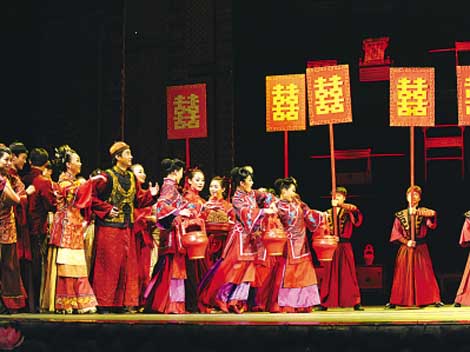
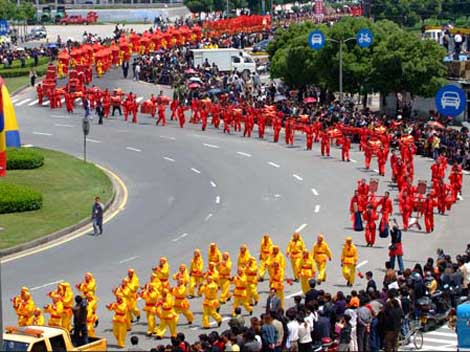
The custom of Ten-mile Red Dowry, which is based on an ancient tale, was popular in east Zhejiang Province during the Ming and Qing Dynasties. The custom was not only unique to Ninghai and other east Zhejiang areas, but also an important event of folk wedding ceremony. An age-old household tale in Ninghai goes llike this:
King of Kang Zhao Gou once was chased by the invaded Jin soldiers to Xixiang of Ningbo. A village girl hid him under a wicker basket on the threshing ground, which fooled the Jin soldiers. After King of Kang was rescued, he confided to the girl his true identity and promised that he would take the girl to the imperial palace to repay her kindness after his regime stabled. And they appointed to have the bellyband as a pledge. The next year, the King of Kang came to look for the girl, but all the families with an unmarried daughter in the village were hanging up a bellyband in front of the house. The King of Kang and his envoys, unable to distinguish which girl was his lifesaver and thus having no way to keep his promise, had to issue an imperial edict, declaring “Girls in east Zhejiang Province are all princess.” When they married, they could have the treat of a princess – wearing phoenix coronet and official robe, and their dowry could be carved with dragon and phoenix. From then on, the wedding ceremony enjoying princess’s wedding treatment was legalized.
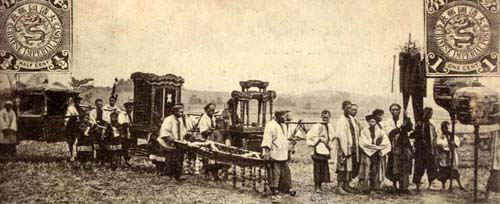
The dowry procession could last miles away, which is called “Ten-mile Red Dowry” in exaggeration. The term was later specially referred to as marriage, becoming the symbol of a legal marriage. And it was also a folk event for cultural exchanges between villages.
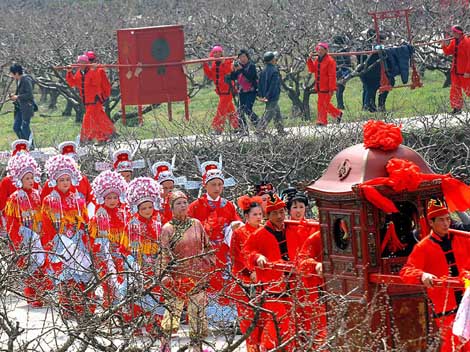
Ninghai Ten-mile Red Dowry wedding customs mainly include wedding etiquettes like engagement, match-making, dating, preparing for dowry, receiving dowry, bride reception, wedding ceremony, bridal chamber pranks, bride’s home visit, etc, and the craftsmanship of red dowry as well. Qiangong bed (bed with exquisite workmanship that takes the craftsman a thousand working hours to finish), Wangong sedan chair (sedan chair with exquisite workmanship that takes the craftsman ten-thousand working hours to finish), and Ten-mile Red Dowry are wedding phenomena known to each household in east Zhajiang and have been handed down generation after generation. The red dowry is the symbol of excellent craftsmanship of people in southern Yangtze River Delta. The red color expresses the beautiful wishes of happiness, auspiciousness and ardency. It is an integral part of folk inheritance in south China.
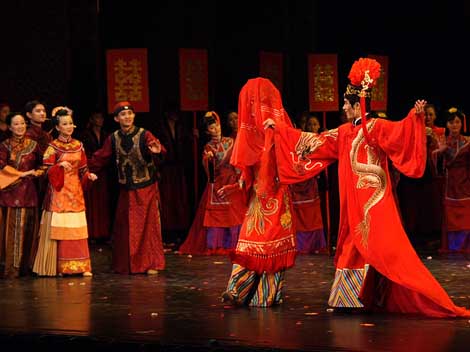
The Ten-mile Red Dowry is the epitome of traditional Chinese customs, containing much charm of the fleeing past. The articles included in the dowry are also of distinct local flavor: the exquisite selection of materials and fastidious requirements for the craftsmanship are beyond the reach of most modern people. “Ninghai Ten-mile Red Dowry Wedding Custom” was selected in the second batch of National Intangible Cultural Heritage List for its strong traditional flavor and exquisite artistic value.





